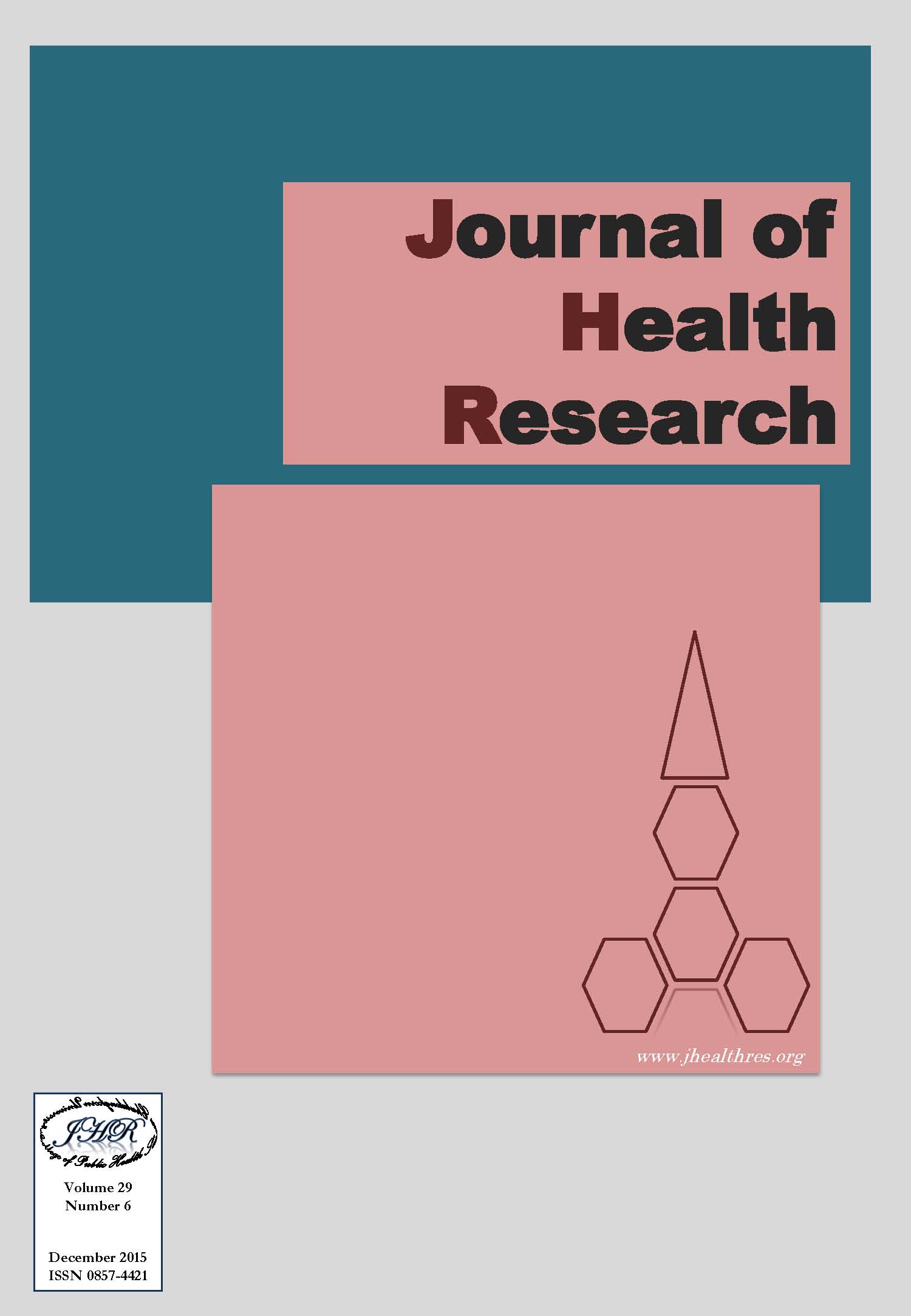Socioeconomic-Demographic Factors and Health-Risk Behaviors in the Thai Population
Keywords:
Health-risk behaviorsว Socioeconomicว Demographicว ThailandAbstract
Background: Health behaviors have important consequences for both the quality and length of life by influencing disease risk and disease outcomes. In Thailand the leading cause of death in both men and women is non-communicable disease (NCD) which could prevented in part by healthy behaviors. The objectives of this study were to identify the existing health-risk behaviors in the Thai population and to analyze associations between socioeconomic-demographic factors and health-risk behaviors.
Methods: The data from the 2010 Evaluation of Health Promotion and Sports in Local Regions in Thailand was analyzed to response the research objective. The socio-economic-demographic factors included gender, age, marital status, education, occupation and region; the health-risk behaviors comprised smoking, alcohol consumption and non-exercise. Descriptive analysis and logistic regression modeling were implemented to analyze the relationships between socioeconomic-demographic factors and health risk behavior.
Results: There were 8,617 respondents, including 3,329 women (38.6%), and 5,288 men (61.4%) which age average was 52 (Min=15 years; Max=86 years; SD=14.8 years).More than half of respondents reported educational attainment of primary school (62.2%). Most subjects were married (68.2%). Farming accounted for the largest occupation category (25.3%) and mostly lived in the northeast region (25.2%). The logistic regression analysis found that male and ever married had greater adjusted odds ratios of smoking, alcohol consumption and non-exercise than others. Farmers, wage laborers and younger respondents had higher odds of smoking and drinking alcohol than others, while government officers had the highest non-exercise practice. People who live in southern region had the greatest odds of smoking. The northern population had the highest odds of alcohol consumption. Moreover, people with higher education had lower adjusted odds ratios for the three types of health-risk behaviors.
Conclusion: Health-risk behavior was statistically significantly associated with socioeconomic-demographic factors. These findings can help inform public policy regarding health-risk behaviors. Specifically, the findings suggest that health promotion policy should be oriented towards males, younger population, ever-married, low educational attainment, farmers, and wage labor workers. Policy should also take geographic differences in risk factors into account.







